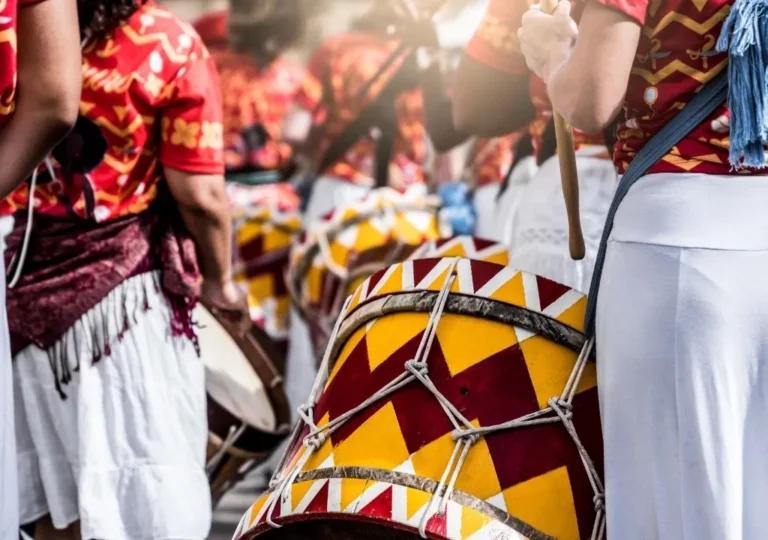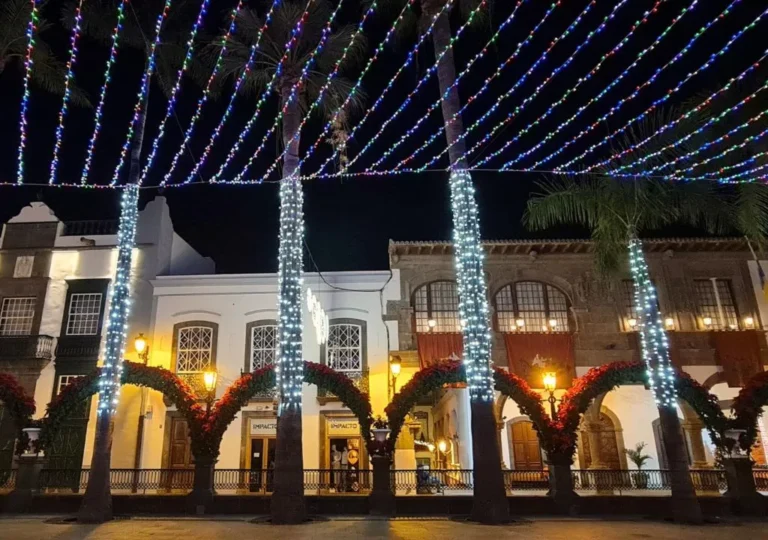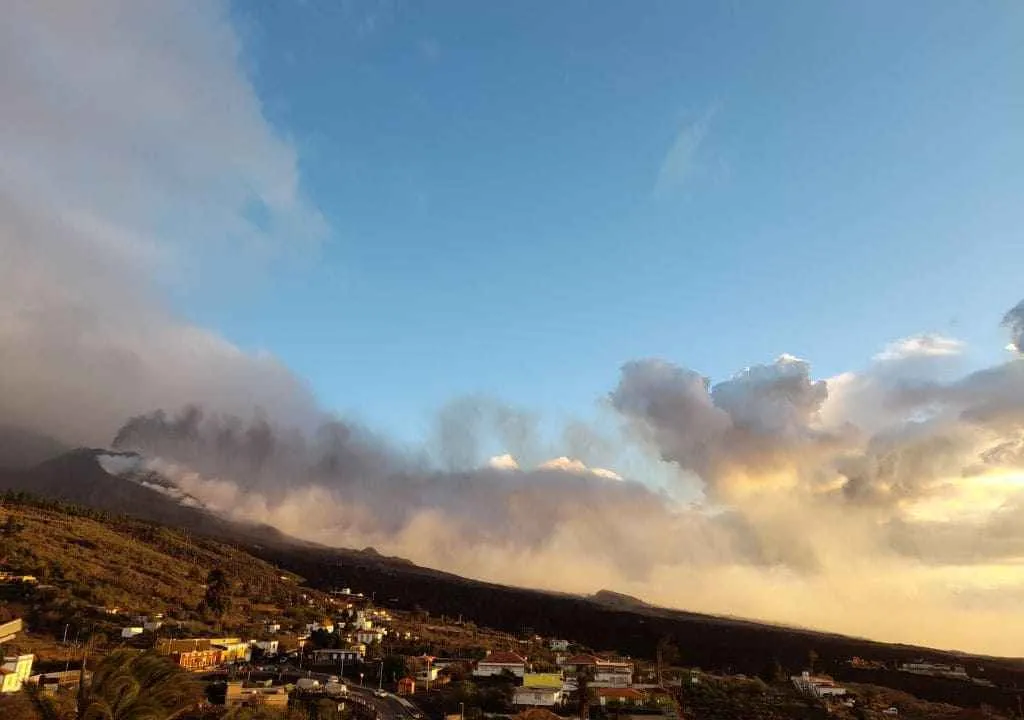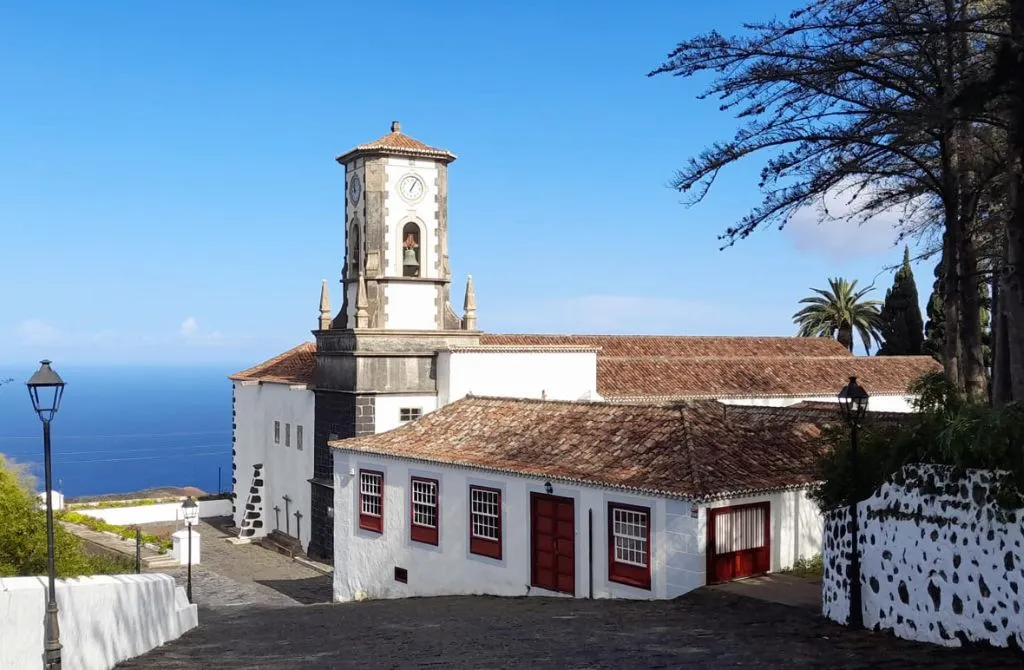Santa Cruz de La Palma blends colonial elegance, cobblestone streets, vibrant Canarian balconies and a laid-back port atmosphere, designated both a Cultural Interest Site and Historical-Artistic Complex. Stroll along Calle Real, linger in sunlit plazas or wander the harbor to soak in an authentic, unhurried experience.
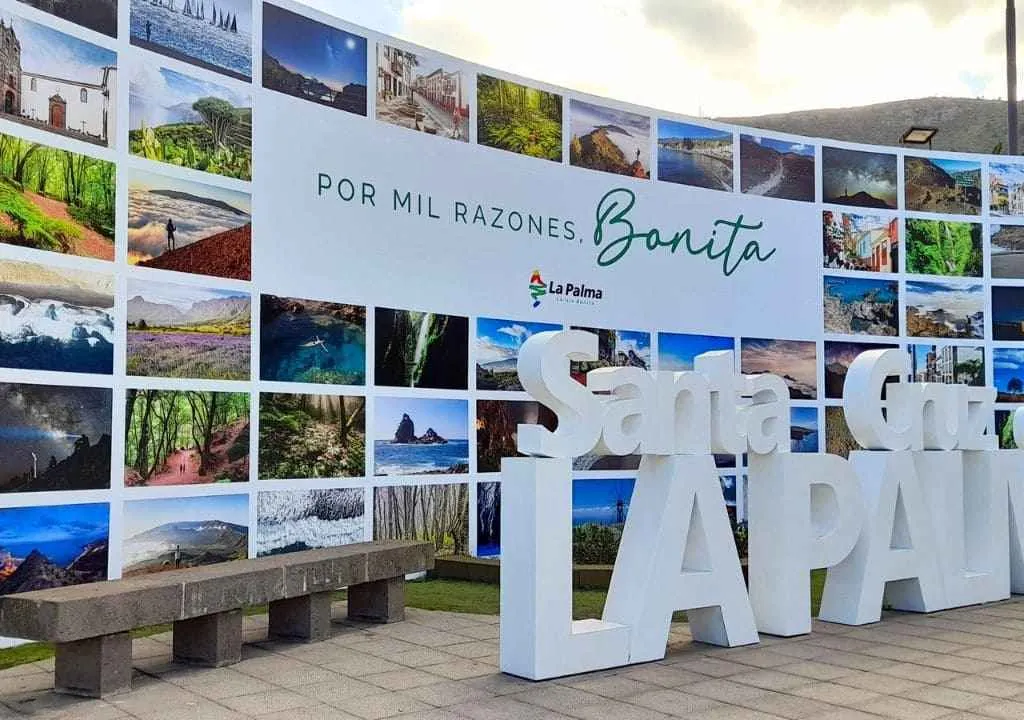
What makes Santa Cruz de La Palma special?
- Historic streets & architecture: rich Renaissance, Baroque and Neoclassical heritage pervades the city.
- Canarian wooden balconies: colorful, flower‑filled and emblematic, each telling a story.
- Landmarks from the 17th-18th centuries: grand palaces and churches like El Salvador, Santo Domingo and San Francisco.
- Plaza de España & its surroundings: the perfect trio: Town Hall, church and square, forms one of the most refined Renaissance ensembles in the Canaries.
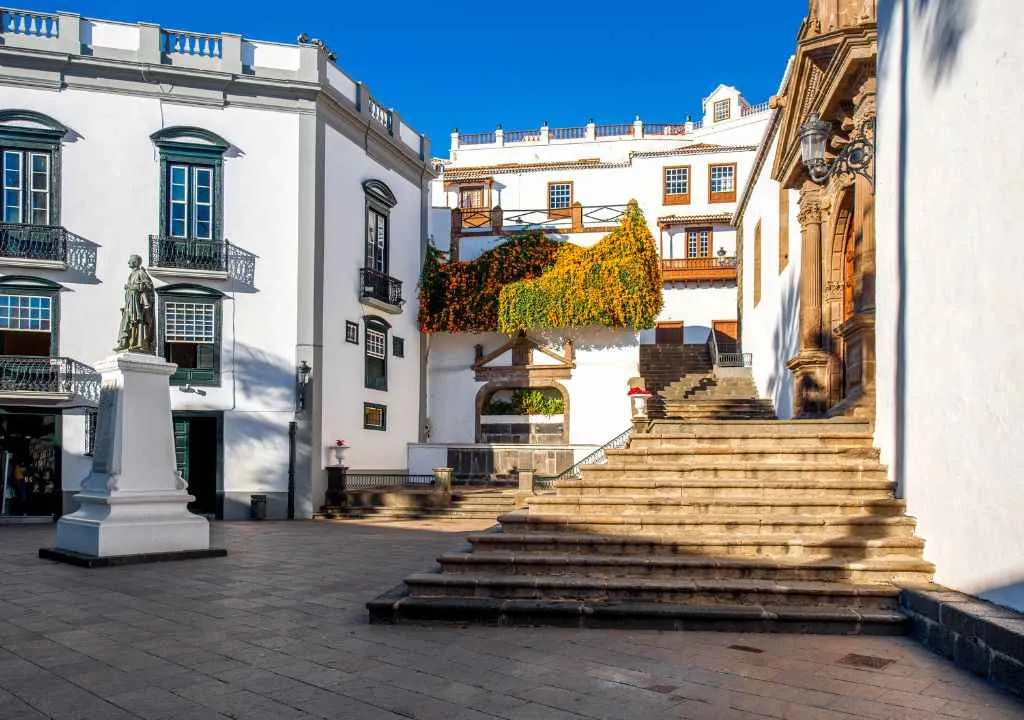
What to see and do in Santa Cruz de La Palma
This charming coastal city whispers stories of corsairs, explorers and ocean‑spanning voyages. Don’t miss:
- Wander the historic centre: explore O’Daly and Anselmo Pérez de Brito streets-together known as Calle Real. Admire their colorful façades, hidden courtyards and colonial charm.
- Feel the pulse: vibrant shops, art galleries, cafés and restaurants reflect local life framed by floral plazas and quaint alleys.
- Relax at Placeta de Borrero: a cozy square with terraces, ideal for sipping coffee and enjoying the local vibe.
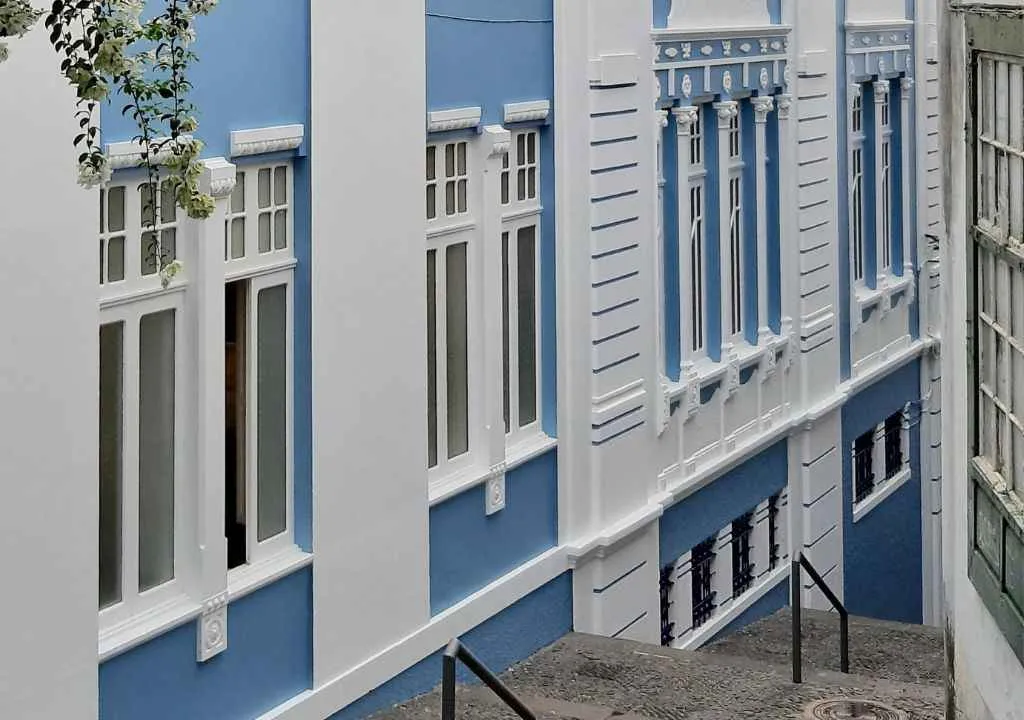
Explore museums & heritage sites:
- Casa Salazar (O’Daly 22): elegant palace with an interior courtyard, now used for cultural events.
- Plaza de Vandale (1948): features “Los Divinos” sculpture, honoring traditional Christmas choirs.
- Temple of San Francisco: former Dominican convent now housing the Island Museum.
- Castillo de Santa Catalina: coastal defense remains that defended the town from pirates.
- Barco de la Virgen (Plaza de La Alameda): a ship‑shaped naval museum celebrating maritime tradition and devotion to the Virgen de Las Nieves during Lustral Festivals.

Iconic Canarian balconies
Santa Cruz boasts the finest collection of wooden balconies in the Canaries, particularly along the Avenida Marítima, with ornate double balconies and Ajimez-style designs inspired by Arabic architecture, originally used for shade and ventilation. Today they’re lovingly maintained and adorned with lush plants, adding vibrant charm to the seafront.

Enchanting districts
San Telmo, San Sebastián, La Luz: reachable via panoramic glass elevator near the Post Office, these neighborhoods offer authentic colonial architecture and hidden plazas like Plaza Dornajo.
The Sanctuary of Nuestra Señora de Las Nieves
Just 8 minutes by car, this serene sanctuary showcases a terracotta sculpture of the island’s patroness from the 15th century, set within a tranquil natural environment.
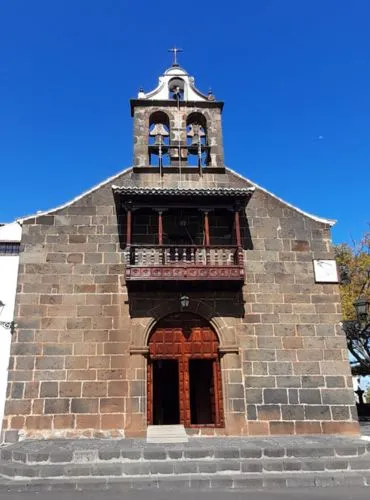
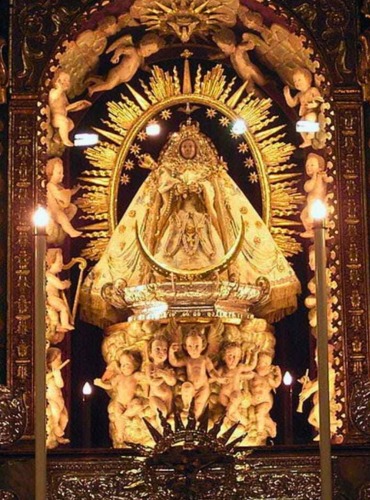
The Bajada de la Virgen: a Five‑Year Tradition
Every five years since 1680, the Virgen de Las Nieves is ceremoniously carried from the mountain sanctuary to the city center. This national festival transforms the streets with music, dance, ceremonies and vibrant communal spirit, a cultural highlight you won’t want to miss.
Urban Beach
Santa Cruz Urban Beach: a welcoming black-sand strip just in front of the old town, perfect for a relaxed swim and then a countryside stroll.
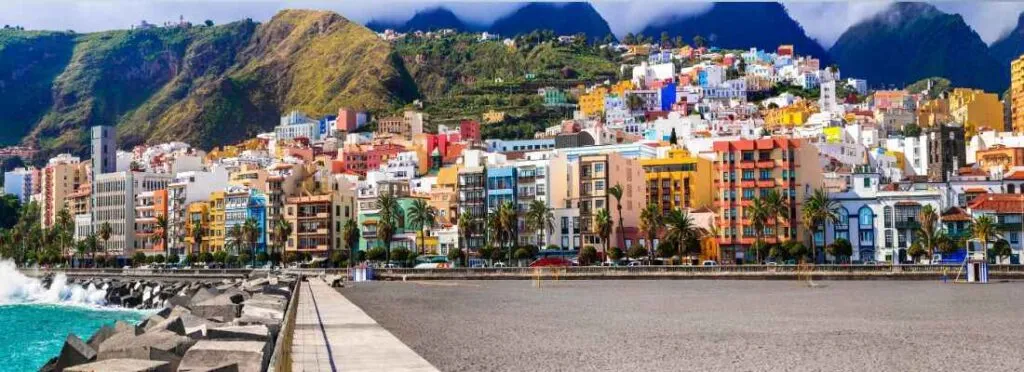
Mercado La Recova
Near Calle Real, this local market offers fresh tropical fruits, cheese, pastries, crafts, and don’t miss freshly squeezed guarapo cane juice.
Art Deco Nitrate Mosaic
At the entrance of Calle Real, discover this 1920s ceramic advertisement, now a cultural icon reproduced on souvenirs.


Discover unique souvenirs from La Palma. Each piece tells a story of island culture and is the perfect keepsake from your adventure.
Gigantic City Sign
At the southern entrance near the port, this seasonal display makes for a perfect photo opportunity.
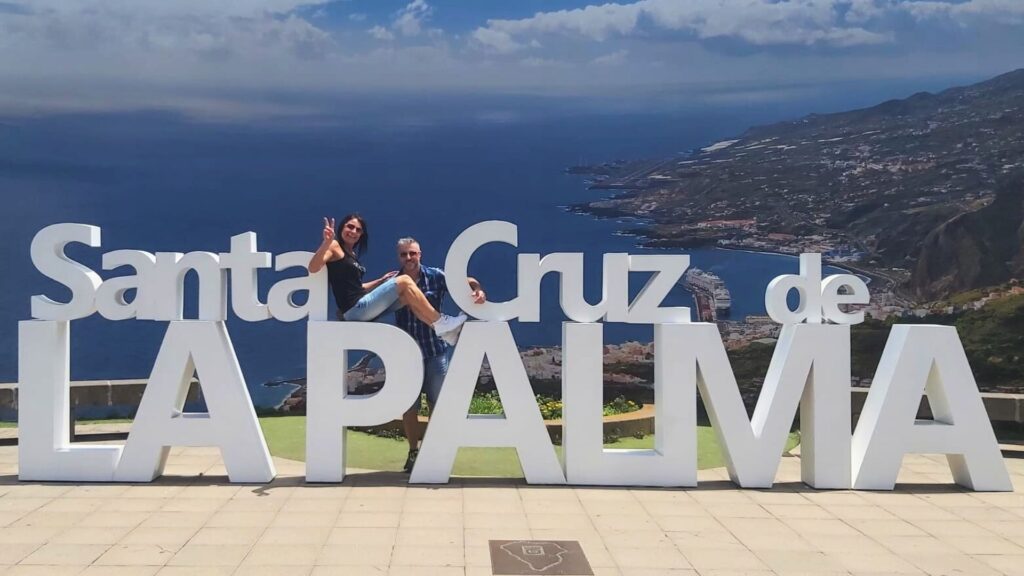
YOUR EXPERIENCE SHINES HERE
If you’ve visited this place, share your impressions and leave a small trace of your journey. Help other travelers discover the true beauty of La Palma.
*Your review is completely anonymous
Practical Tips for Exploring Santa Cruz
- One-day itinerary: easily explored in a day, enjoy a relaxed pace with lunch or drinks at a terrace.
- Comfortable footwear: cobblestones and gentle slopes make good shoes essential.
- Heat strategy: visit central areas early or late, avoiding midday sun.
- Shopping hours: most shops close midday and weekend afternoons, visit early for souvenirs and fewer crowds.
- Parking tips: free spots at Avenida de Los Indianos (south), Avenida de las Nieves (north); paid parking at Avenida del Puente. Summer overflow in Barranco de las Nieves.
- Check local events: festivals occur frequently, find them in local calendars and join the city’s celebrations.
- Don’t miss Mirador de la Concepción: an easy drive to panoramic city views.
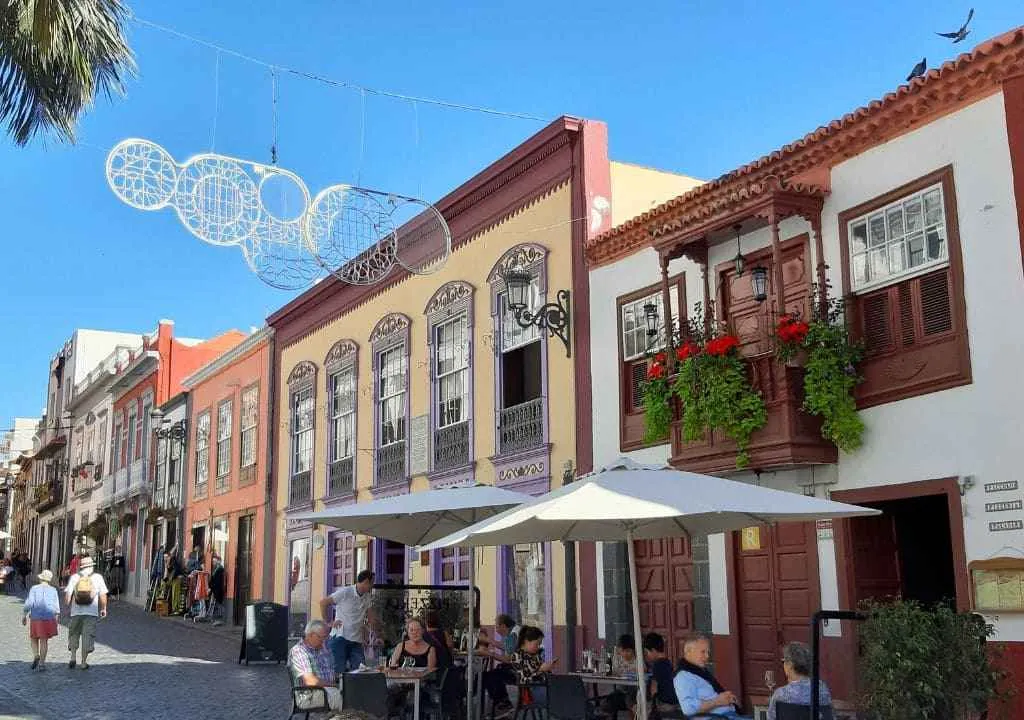
Getting There & Getting Around
- By car. From north via LP‑1, south via LP‑2, west via LP‑3 (through Cumbre Tunnel). Multiple parking zones near the center, especially Avenida del Puente.
- By bus. Connected island-wide by guaguas. Line 500 runs every 30 minutes from the airport (8 km away), 20-30 min ride to town. Central station near downtown.
- By ferry/cruise. Port connects to the mainland (Cadiz) via Transmediterránea and inter-island via Fred Olsen/Armas. Ferries from Tenerife take 2.5-5 hours depending on operator.
- On foot. Best way to discover the city is by walking: many pedestrian streets, monuments, shops and cafés. Glass elevator links lower town to higher neighborhoods.
The Weather in Santa Cruz de La Palma Today
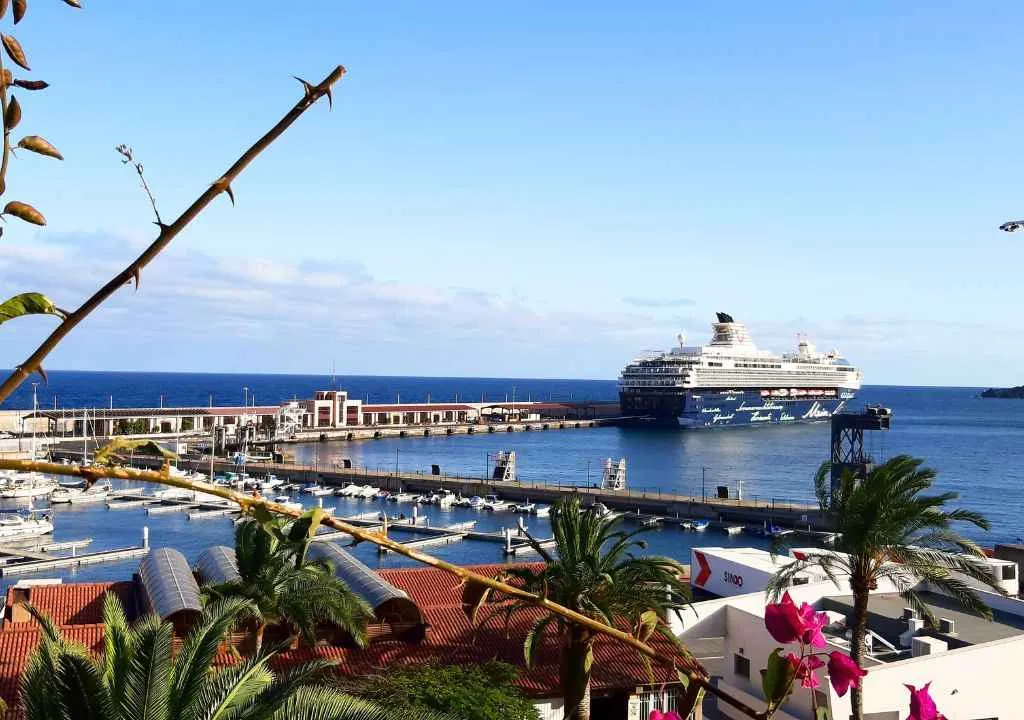
Five Centuries of History
- Founded: May 3, 1493 by Francisco Fernández de Lugo as Villa de Apurón, strategic waypoint between Europe and America.
- 16th century: became last provisioning port to the New World; sugar cane exports boosted prosperity.
- 1553 raid: pirate François Le Clerc (“Peg Leg”) destroyed the town, leading to fortified defenses. Today it’s re-enacted during summer festivals.
- 1558: King Philip II chartered Spain’s first Indies Court here, centralizing colonial shipping documentation.
- 1773 elections: one of Spain’s first democratic elections held here, after lobbying by O’Daly and Pérez de Brito. The city remains a symbol of early civic participation.
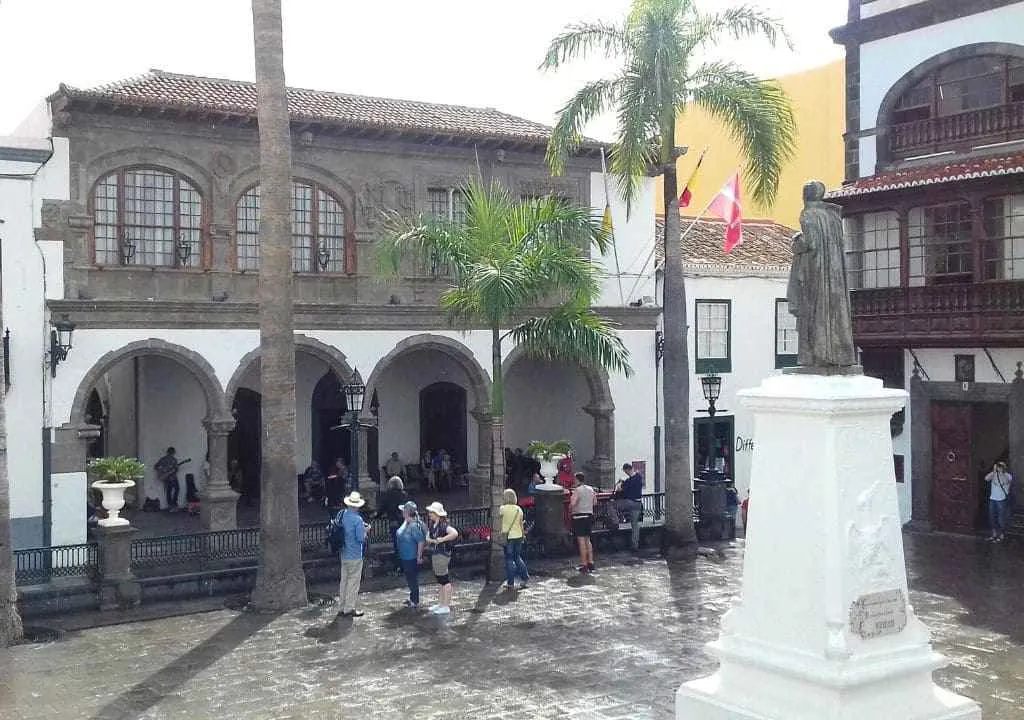
Millennia of maritime trade, conflict, culture and community are etched in every street and building, discover it all while enjoying Santa Cruz de La Palma.
Every summer, Santa Cruz de La Palma relives the legendary corsair attack of 1553 with open-air theatre, live music and thrilling reenactments. The entire city becomes a historical stage where locals and visitors take part in this unique cultural celebration.
→ See the Día del Corsario Program
It might also interest you


